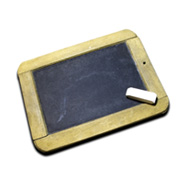
Comment if you know of or have authored any other sources, and I’ll consider them for future posts.




Comment if you know of or have authored any other sources, and I’ll consider them for future posts.

In this post, I’m just briefly showing everyone a simple solution for serving a different version of jQuery (or really, any script) to Internet Explorer versions 6-8.

A lot of references I come across have far too much info, so this post will give examples and brief descriptions of some of the most common and useful string-related methods. I tried to put the most common ones near the top, for quick reference.
Even if you’re just getting started with CSS, you’ve likely used the height and width properties quite a bit already.
But you’ve probably noticed that those properties can put unnecessary constraints on your page elements. So you might benefit from knowing and using related properties that use the “min” and “max” prefixes.

I find that most of the references I’ve seen are far too exhaustive. So for my own personal use, I put together a chart of the character entity references that I’ve needed the most.

Layout-wise, there’s nothing really all that different. It’s more of a different skin than anything, and (out of sheer laziness) the comments and footer area have pretty much remained the same. Basically, I got tired of the dull looking header/sidebar in the previous design and wanted something cleaner and with a little more color.

Includes presentations on CSS performance, WAI-ARIA, responsive design, OOCSS, and more.

She says she finds all the stuff associated with front-end development to be quite overwhelming. Well, she’s not the only one. I think we all feel frustrated at the amount of reading and research that’s needed to keep up with things in the industry.

Two of them (from O’Reilly) are relevant to developers who are working on high-end JavaScript-based applications and the other one (from No Starch Press) is a highly regarded book covering the topic of web application security.

clip property. It has some unique features and syntax, and in this post I’ll outline how it’s used.
At the end of the post you’ll find a link to a demo page where some photos are used to animate the clip property, just to visually demonstrate what this property does.